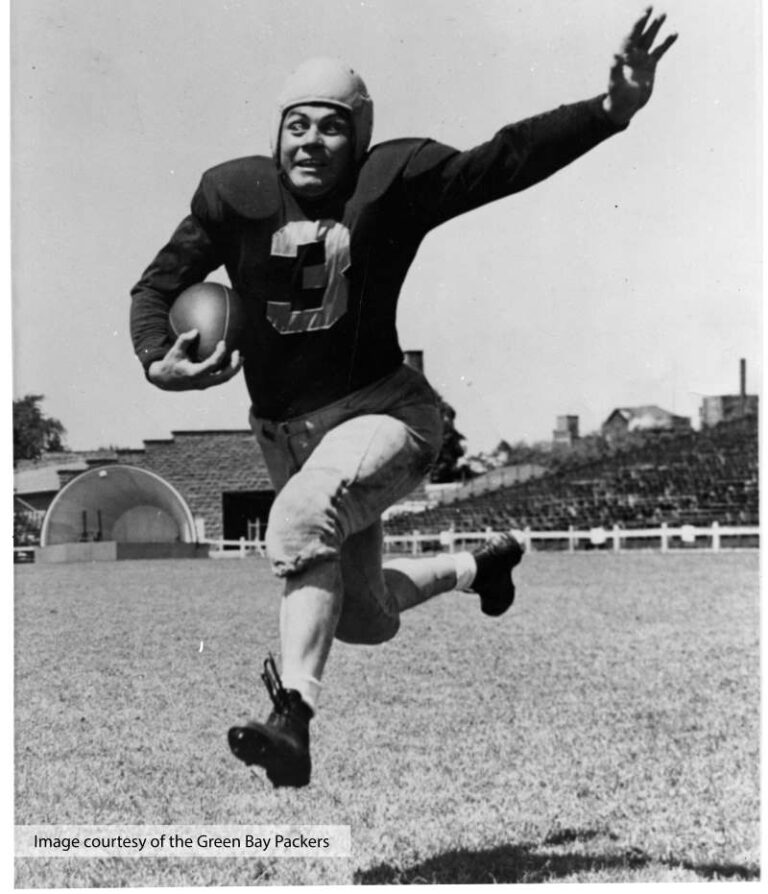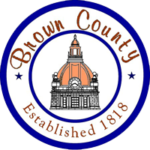Tony Canadeo
Tony Canadeo was selected by Lambeau in the 1941. Lambeau’s work on player scouting reports and college player selection likely took place in his office at the Northern Building.
Canadeo played from 1941-44, and from 1946-52. He was an all-around “Iron Man” for the Packers, playing as a runner and passer on the offense, returning punts and kickoffs, playing safety on defense, and even punting the ball. He was inducted into the Pro Football Hall of Fame in 1974.
Married to a local Green Bay woman, Ruth Toonen, Tony Canadeo lived in the community and stayed involved with the Packers organization after his playing days ended. Canadeo was a member of the Packers Board of Directors from 1955 until 1999. His association with the team as a player and director spanned 55 years.
Downtown Green Bay
Until the 1980s, downtown Green Bay was the heart of the city and the hub of activity for the Packers football team. Curly Lambeau’s office in the Northern Building was the place from which he managed the player personnel and business concerns of the team. Most other activities of the Packers took place within one mile of downtown – games, meetings, ticket sales, even the hotel where many players lived.
Key members of the Packers Board of Directors worked downtown in close proximity to one another, allowing them conveniently to meet and consult on Packers business.
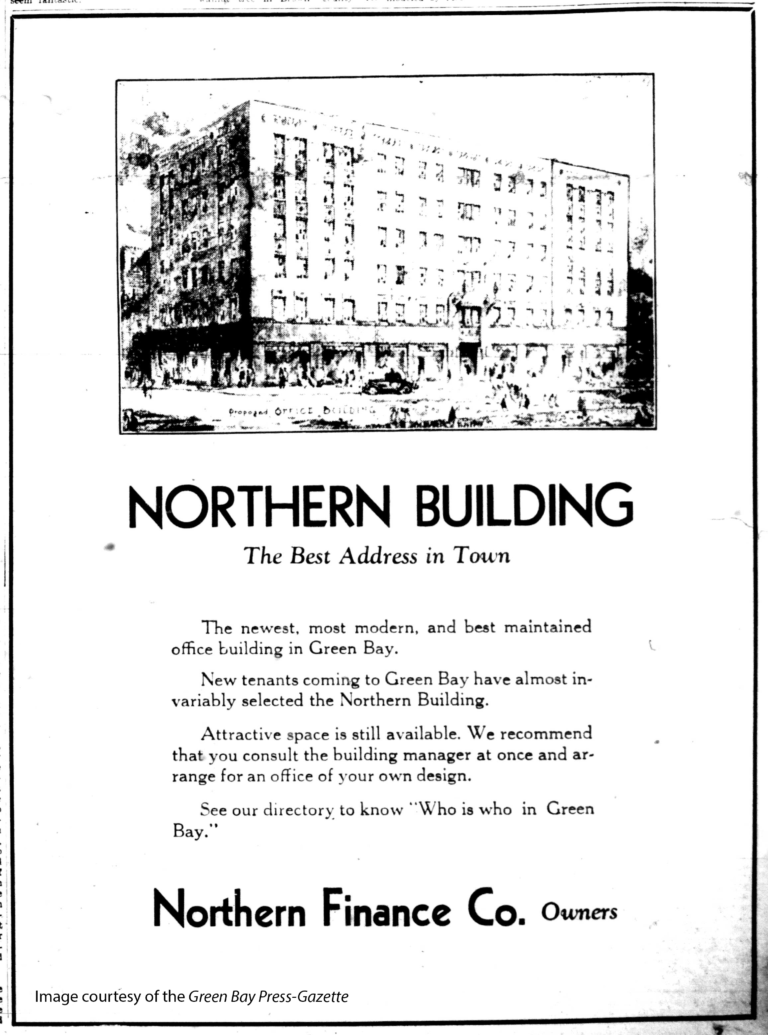
 Northern Building
Northern Building
Now the headquarters of Brown County government, the Northern Building at 305 E. Walnut Street opened in 1930 as an office building for a variety of professional services, including attorneys, doctors, and insurance agents. (Pictured above: Northern Building Ad, Green Bay Press-Gazette, 1934.) At the time the Northern Building opened, Curly Lambeau represented Massachusetts Mutual Insurance Company and managed the Packers from an office there.
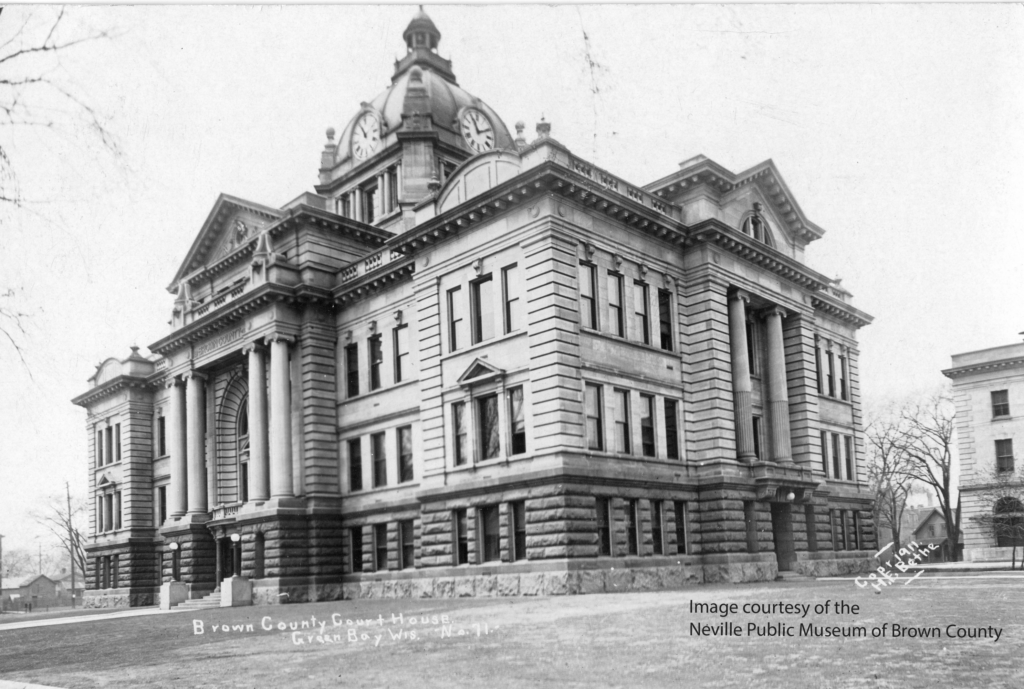
Brown County Courthouse
The Board of Directors and its Executive Committee met at the Brown County Courthouse at 100 South Jefferson Street.
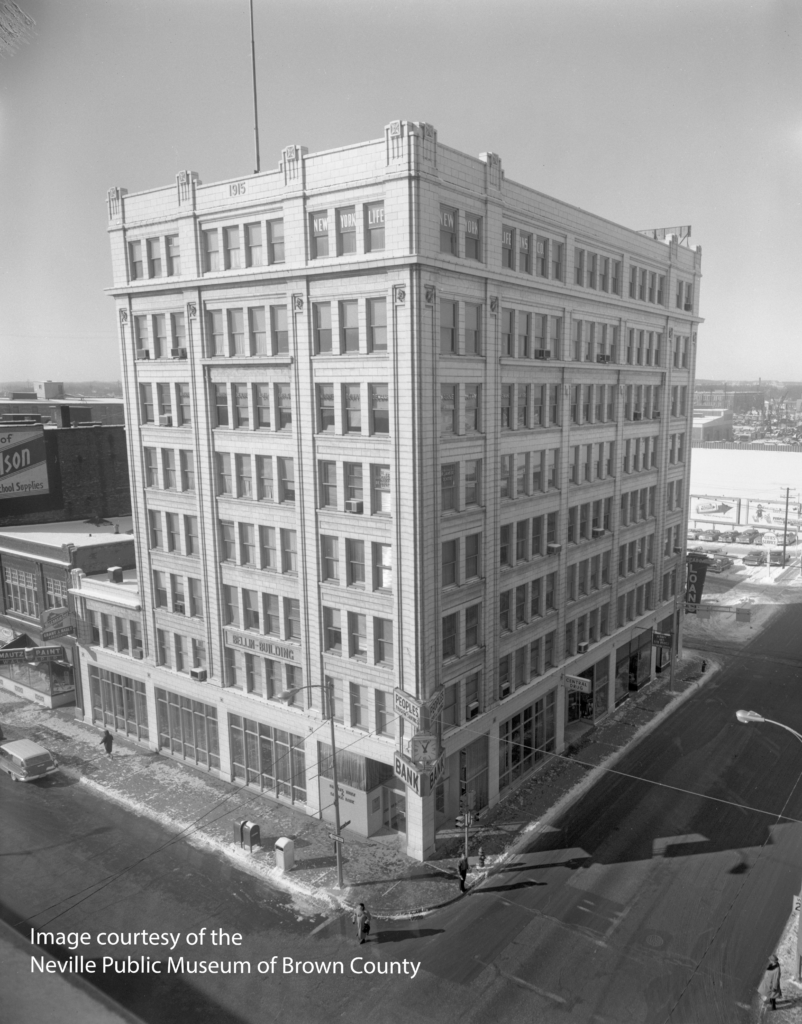
Bellin Building
Influential members of the Packers organization had offices in the Bellin Building at 130 E. Walnut Street, including attorneys Gerald Clifford and Frederick N. Trowbridge Sr., as well as Dr. W.W. Kelly.
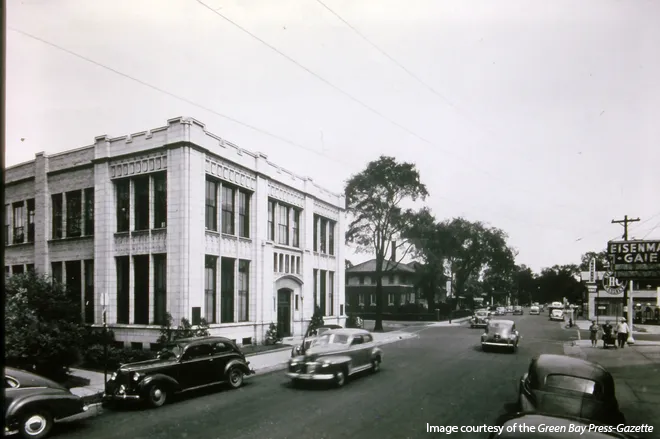
Green Bay Press-Gazette
Andrew Turnbull, one of the owners of the Green Bay Press-Gazette, was a major force on the Packers Board of Directors, and George W. Calhoun ran the Packers PR functions out of the Press-Gazette building at 435 E. Walnut Street (pictured here in the 1940s).
Professional Football’s College Player Selection in Wisconsin
The excitement to host the Draft is high in Green Bay and Brown County. A professional football college player selection event happened once before in Wisconsin, at Milwaukee’s Schroeder Hotel on December 9, 1939. Player selections in the early professional drafts, which began before the 1936 season, secured for a team only the right to negotiate with a player.
The professional football college player Draft was intended to give financially poorer teams a chance to sign better players, thereby encouraging competition in the league. It was George Halas – founder, owner, and long-time coach of the Chicago Bears – who first perfected the use of Draft picks to improve his team. Halas was known as a shrewd negotiator who usually ended up on the better side of a deal. He regularly traded aging players to other teams to collect Draft picks. In the college player selection event leading up to the 1939 season, Halas traded a player to the Pittsburgh team for the second overall pick, with which he selected quarterback Sid Luckman of Columbia, who went on to a Hall of Fame career.
 The 1940 professional football college player selection event in Milwaukee is recognized as the moment when Halas perfected his wheeling and dealing to strengthen his team. In a deal with the Philadelphia team, Halas was again able to secure two first-round picks, both of whom went on to become members of the Hall of Fame. With the second overall pick, he selected Duke halfback George McAfee, an exciting open field runner, and with the seventh overall pick, Center Clyde “Bulldog” Turner. With his remaining twenty selections in that draft in Milwaukee, Halas chose several other significant contributors to his team. Chicago recorded 8 wins to three losses in its 1940 season, finishing with a 73-0 shellacking of the Washington team for the championship.
The 1940 professional football college player selection event in Milwaukee is recognized as the moment when Halas perfected his wheeling and dealing to strengthen his team. In a deal with the Philadelphia team, Halas was again able to secure two first-round picks, both of whom went on to become members of the Hall of Fame. With the second overall pick, he selected Duke halfback George McAfee, an exciting open field runner, and with the seventh overall pick, Center Clyde “Bulldog” Turner. With his remaining twenty selections in that draft in Milwaukee, Halas chose several other significant contributors to his team. Chicago recorded 8 wins to three losses in its 1940 season, finishing with a 73-0 shellacking of the Washington team for the championship.
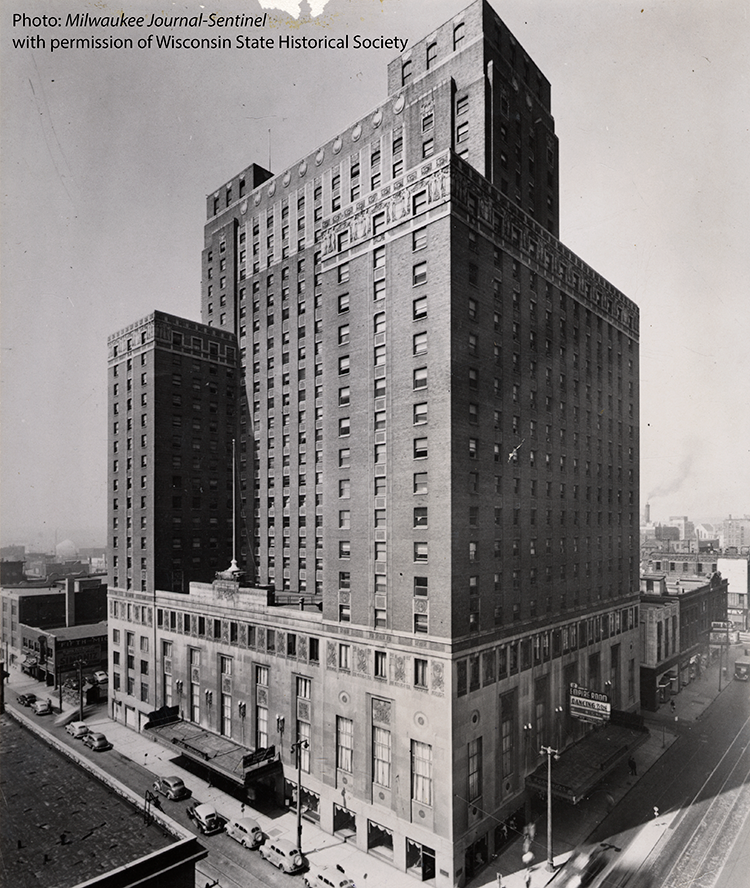
Schroeder Hotel, Milwaukee, Wisconsin, circa 1941.

